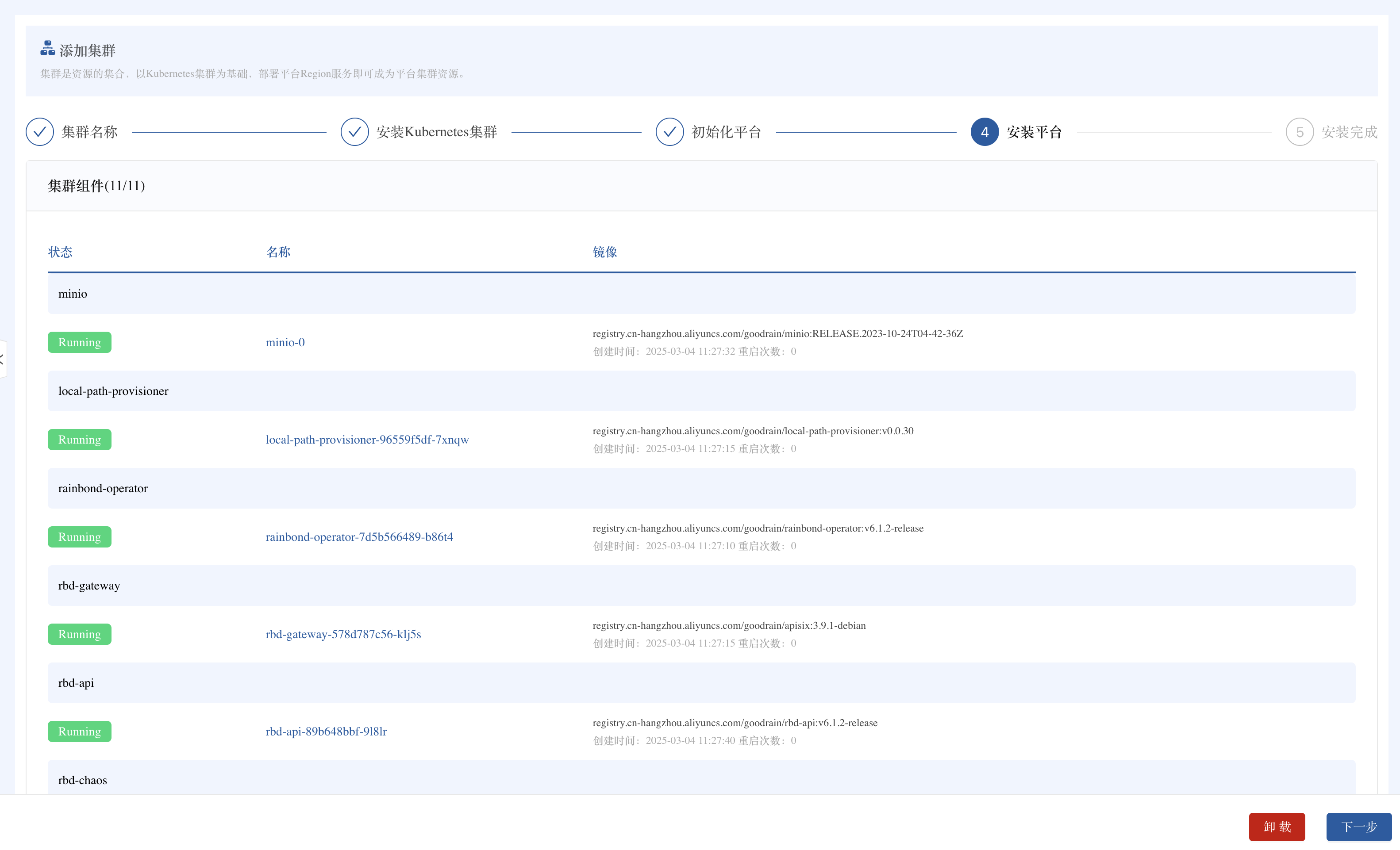Access existing servers and create a multi-tenant environment
This tutorial will demonstrate some of the core capabilities of Rainbond's multi-tenant management:
- Resource expansion: Seamlessly access existing servers to quickly expand the computing resource pool.
- Multi-tenant isolation: Create independent team spaces to achieve secure isolation of resources and applications.
- Fine-grained permission management: Flexibly assign user roles to meet the needs of different collaboration scenarios.
Prerequisites
- Completed Rainbond Quick Installation and experienced application deployment in a single-machine environment.
- Prepare additional Linux servers (physical or virtual machines).
Expand Computing Resources
Highlights
- Zero-intrusion access: Without changing the existing server configuration, maintain the stability of the original business
- Automated installation: Complete node initialization, component deployment, and cluster access with one click
- Heterogeneous support: Compatible with server resources of different configurations and system versions
Operation Process
-
Prepare Computing Nodes
- Confirm the target server meets the basic requirements:
- Configuration above 2 cores and 4GB
- Common Linux systems (such as CentOS/Ubuntu/Debian)
- Ensure the server network is interconnected with existing Rainbond nodes
- Confirm the target server meets the basic requirements:
-
Graphical Node Access

- Log in to the Rainbond console, go to Platform Management ➡️ Cluster ➡️ Add Node.
- Select Start Installation from Host, and get the node access command.
- Execute the access command on the target server:
# Example command (actual command is subject to the console display)
curl -sfL http://<ConsoleIP>:7070/install-cluster.sh | sh -s - --rbd-url http://<ConsoleIP>:7070 --etcd --control-plane --worker --token <TOKEN> --mirror cn - Wait for the K8S node initialization to complete, and the status changes to Ready.
- Fill in the configuration information for installing Rainbond:
- Cluster Entry IP: Generally the internal or external IP of the gateway node.
- Gateway Node: Select which nodes to serve as gateway nodes.
- Build Node: Select which nodes to serve as build nodes
- Wait for all components to be installed.
- Docking completed!

Create a Multi-tenant Environment
Highlights
- Resource isolation: Resources between teams do not affect each other, ensuring business security
- Self-service: Team administrators can independently manage applications and members within the team
Operation Process
Create Business Team
- Go to Platform Management ➡️ Project/Team ➡️ Create Project/Team.
- Fill in the team name (e.g., Development Team, Testing Team, Production Team).

- Go to the team ➡️ Settings ➡️ Members, add other members to join the team.

info
- It is recommended to create teams according to the actual organizational structure to avoid too many teams leading to management complexity
- Allocate resource quotas reasonably, reserve about 20% of resources to cope with sudden needs